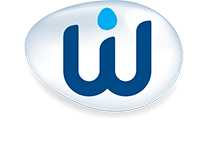1. Understanding your body
Your body has just grown a human for 9 months and then given birth – this a big deal that shouldn’t be overlooked! During pregnancy & childbirth your stomach muscles are stretched & weakened, so it’s completely unrealistic to expect them to “bounce” back. Your body may or it may not ever be the same as it was pre-pregnancy, but there are safe steps you can take to ensure it is as healthy & strong as possible post-baby.
Another consideration is the impact of hormones. Your hormone levels are different post-birth & when you are breastfeeding. This impacts your muscle strength & the stability of your joints. Allow your body 12 months to fully recover, or until after you finish breastfeeding.
2. Optimise your recovery in the first 0-6 weeks
The first 6 weeks after you give birth is a time to rest, recover & start moving your body safely. To optimise your recovery, there are safe exercises you can do to improve your posture, core strength & mobility. This will help you regain strength to look after your baby, prevent back pain & help you be in better shape to return to exercise.
To find out how to optimise your recovery, grab my E-book on Early Postpartum Exercises here.
3. Have an assessment with a Women’s Health Physio (*this is different to your Obstetrician check-up)
It’s important for every new mum to have an assessment with a Women’s Health Physio at 6 weeks postpartum, as well as their Obstetrician/GP 6 week check up. Women’s Health Physio’s are trained to do comprehensive pelvic floor assessments and assess abdominal muscle separation. We perform a vaginal examination to assess the strength and state of your pelvic floor following birth. Obstetricians, on the other hand, whilst amazing professionals, are not trained to do pelvic floor examinations, so it is up to you to book an appointment with a Women’s Health Physio (you do not need a referral to do so).
We will set you up with an individualized core exercise program and guide you on what exercise is safe for you according to our assessment findings.
4. Your pelvic floor recovery
There are multiple factors that affect your pelvic floor recovery, such as your pelvic floor strength going into birth; if you prepared your pelvic floor for birth; if you had a vaginal birth, elective or emergency caesarian section; the length of your labour; the size of your baby; whether you had a perineal tear or episiotomy; and the use of forceps or ventouse.
In order to start exercising again, it is essential that your pelvic floor is recovering well and you do not have any symptoms. You should not experience any vaginal heaviness (sign of prolapse), bladder leakage, pain or abnormal sensations during or after exercise. Your Women’s Health Physio will help treat any of these symptoms and guide you on a safe exercise plan.
5. Your abdominal muscles recovery
Abdominal muscle separation (diastasis) is very common in the last trimester of pregnancy and postpartum. As a result, your abdominal muscles & core are weaker, and this impacts the type of exercise you can do.
The key to your abdominal muscle recovery is learning how to correctly activate your deep abdominal muscles (transversus abdominis) using a real-time ultrasound machine. You also need to avoid exercises that create intra-abdominal pressure, such as crunches, planks & high-impact exercise, as these will worsen your abdominal separation. This is yet another reason why assessment & guidance from a Women’s Health Physio is essential.
6. Your fitness & strength during pregnancy
Keeping fit & strong during pregnancy has many benefits, one being – a better recovery post-birth. If you have been exercising safely & regularly during your pregnancy, getting back into exercise postpartum will be easier for you compared to being sedentary.
When I refer to exercising in pregnancy, I am not talking about high-intensity, high-impact, cross-fit type exercise. I am talking low-impact, pelvic floor safe exercise, as explained here.
7. Strengthen from the inside out
Always start focusing on your core muscles (your pelvic floor & deep abdominal muscles) and your posture. As you strengthen your core, and improve your posture, you can work your way out to your superficial muscles.
Postpartum recovery & exercise is all about gradual progression, and tuning into how your body responds to exercise.
8. Keep it low-impact
Always start with low-impact exercise such as walking around the block on a flat surface, and gradually increasing the distance you walk. After your 6-week assessment, you can continue to increase the distance & intensity of walking, start Postnatal Pilates and Yoga, swimming, and light strength training.
Avoid high-impact exercise until cleared by your Women’s Health Physio i.e. jumping, running, skipping, heavy weights.
Make sure you don’t go too hard too soon, as you can do damage to your body (especially pelvic floor). Be aware that pelvic floor symptoms don’t always present straight away, they can manifest with exercise, time & babies.
9. Use qualified postnatal trainers
Make sure any postnatal exercise class you do is run by a specialist postnatal fitness trainer. I have seen too many new mums come to see me who have got back into training with a personal trainer who has limited knowledge on the postpartum body, and have ended up with a prolapse. If in doubt, trust your gut & ask your Women’s Health Physio.
10. Listen to your body
Your body is a messenger, so make sure you listen to it! Don’t push through any pelvic floor symptoms, pain or anything else that doesn’t feel right. The aim is for you to feel stronger & more energised, not depleted & sore.
11. Maintain adequate and optimal nutrition
There is so much focus on returning to exercise post-baby for weight loss or to get your “pre-baby body back”, but what we forget about the importance of nutrition. Eating nourishing wholefoods is extremely important for you and your baby’s nourishment, your milk supply, recovery, muscle strength, mental health and of course weight loss.
Eating an abundance of veggies, fruits, good quality protein, good fats, and collagen rich foods, such as bone broth, is important to stabilize your blood sugars and aid your body’s recovery.
For detailed Guidelines on Postpartum Exercise, grab my Free E-book here.
By Anna Scammell
Masters-trained Women’s Health Physiotherapist
Connect with Anna: [email protected]
Social: @the.whole.mother
Website: www.thewholemother.com

